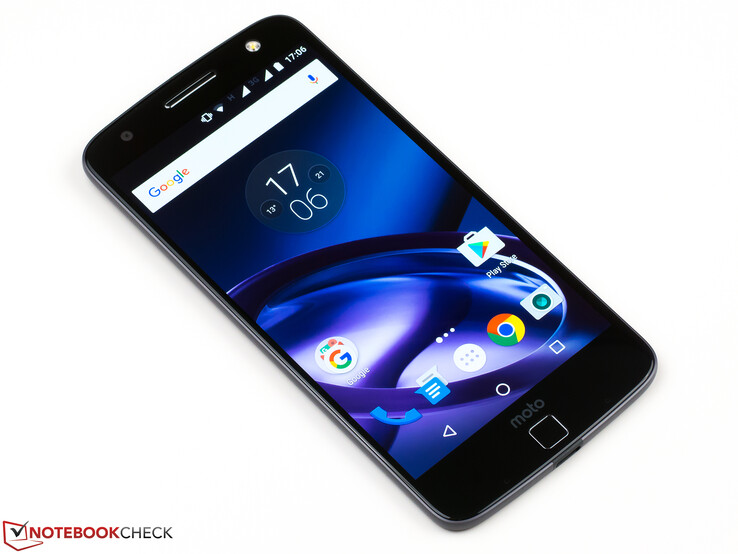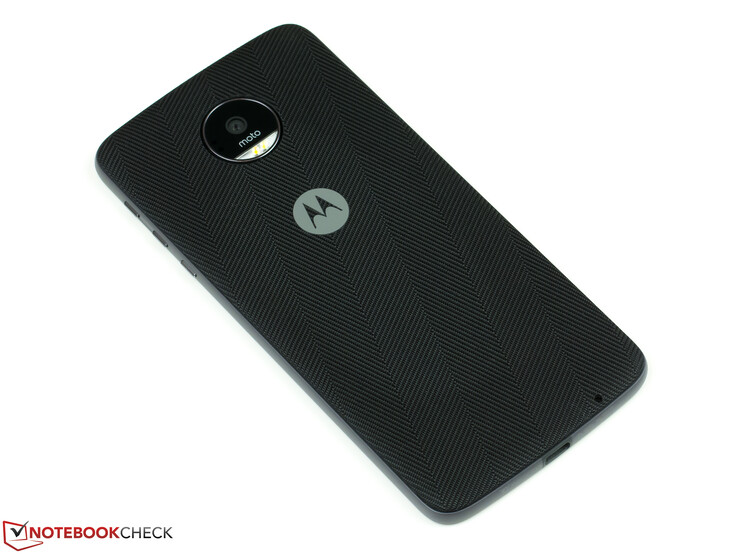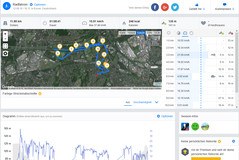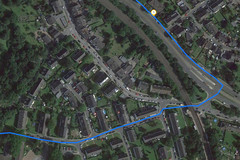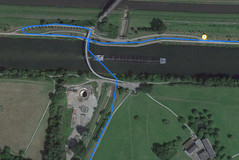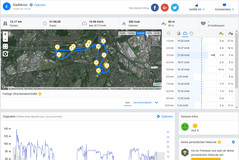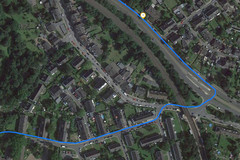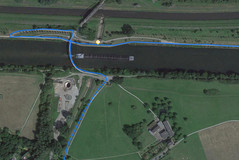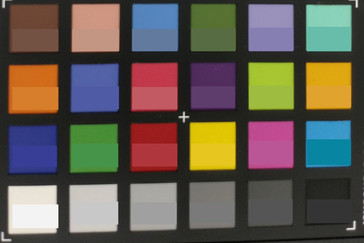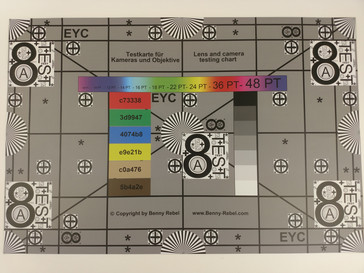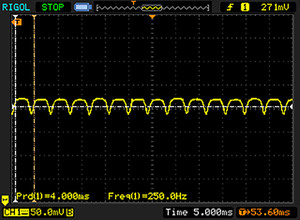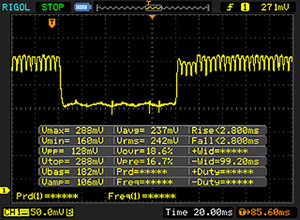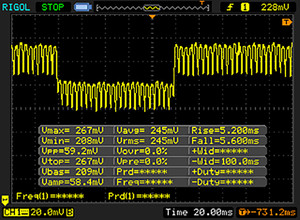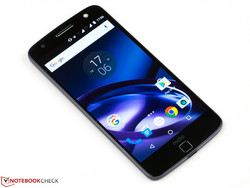Breve Análise do Smartphone Lenovo Moto Z
Os Top 10
» Os Top 10 Portáteis Multimídia
» Os Top 10 Portáteis de Jogos
» Os Top 10 Portáteis Leves para Jogos
» Os Top 10 Portáteis Acessíveis de Escritório/Empresariais
» Os Top 10 Portáteis Premium de Escritório/Empresariais
» Os Top 10 dos Portáteis Workstation
» Os Top 10 Subportáteis
» Os Top 10 Ultrabooks
» Os Top 10 Conversíveis
» Os Top 10 Tablets
» Os Top 10 Smartphones
» A melhores Telas de Portáteis Analisadas Pela Notebookcheck
» Top 10 dos portáteis abaixo dos 500 Euros da Notebookcheck
» Top 10 dos Portáteis abaixo dos 300 Euros
Size Comparison
| Networking | |
| iperf Server (receive) TCP 1 m | |
| Lenovo Moto Z | |
| Apple iPhone 7 Plus | |
| LG G5 | |
| Samsung Galaxy S7 Edge | |
| OnePlus 3 | |
| Huawei P9 | |
| iperf Client (transmit) TCP 1 m | |
| Apple iPhone 7 Plus | |
| Lenovo Moto Z | |
| Samsung Galaxy S7 Edge | |
| OnePlus 3 | |
| Huawei P9 | |
| LG G5 | |
| |||||||||||||||||||||||||
iluminação: 92 %
iluminação com acumulador: 485 cd/m²
Contraste: ∞:1 (Preto: 0 cd/m²)
ΔE ColorChecker Calman: 2.1 | ∀{0.5-29.43 Ø4.78}
ΔE Greyscale Calman: 2.6 | ∀{0.09-98 Ø5}
100% sRGB (Argyll 1.6.3 3D)
88.14% AdobeRGB 1998 (Argyll 1.6.3 3D)
99.7% AdobeRGB 1998 (Argyll 3D)
100% sRGB (Argyll 3D)
98.4% Display P3 (Argyll 3D)
Gamma: 2.23
CCT: 6843 K
| Lenovo Moto Z AMOLED, 2560x1440, 5.5" | Samsung Galaxy S7 Edge Super AMOLED, 2560x1440, 5.5" | LG G5 IPS Quantum, 2560x1440, 5.3" | Huawei P9 Plus AMOLED, 1920x1080, 5.5" | OnePlus 3 Optic-AMOLED, 1920x1080, 5.5" | Google Nexus 6P AMOLED, 2560x1440, 5.7" | Microsoft Lumia 950 XL AMOLED, 2560x1440, 5.7" | Apple iPhone 7 Plus IPS, 1920x1080, 5.5" | |
|---|---|---|---|---|---|---|---|---|
| Screen | ||||||||
| Brightness middle (cd/m²) | 485 | 554 14% | 784 62% | 361 -26% | 419 -14% | 363 -25% | 297 -39% | 557 15% |
| Brightness (cd/m²) | 490 | 552 13% | 774 58% | 366 -25% | 431 -12% | 365 -26% | 297 -39% | 553 13% |
| Brightness Distribution (%) | 92 | 96 4% | 91 -1% | 87 -5% | 84 -9% | 90 -2% | 93 1% | 97 5% |
| Black Level * (cd/m²) | 0.43 | 0.35 | ||||||
| Colorchecker dE 2000 * | 2.1 | 1.59 24% | 6.5 -210% | 5.1 -143% | 4.1 -95% | 2.34 -11% | 2.67 -27% | 1.4 33% |
| Colorchecker dE 2000 max. * | 5.5 | 2.56 53% | 11.7 -113% | 10 -82% | 12 -118% | 3.98 28% | 3.1 44% | |
| Greyscale dE 2000 * | 2.6 | 2.01 23% | 8 -208% | 5.5 -112% | 3.3 -27% | 1.03 60% | 2.81 -8% | 1.3 50% |
| Gamma | 2.23 99% | 2.01 109% | 2.22 99% | 2.24 98% | 2.1 105% | 2.23 99% | 2.08 106% | 2.21 100% |
| CCT | 6843 95% | 6321 103% | 8699 75% | 7388 88% | 6550 99% | 6429 101% | 6379 102% | 6667 97% |
| Color Space (Percent of AdobeRGB 1998) (%) | 88.14 | 82.12 -7% | 68.08 -23% | 89.38 1% | 66.31 -25% | 63.1 -28% | ||
| Color Space (Percent of sRGB) (%) | 100 | 99.98 0% | 97.46 -3% | 100 0% | 99.79 0% | 99.83 0% | ||
| Contrast (:1) | 1823 | 1591 |
* ... menor é melhor
Cintilação da tela / PWM (modulação por largura de pulso)
| Tela tremeluzindo/PWM detectado | 250 Hz | ≤ 100 % configuração de brilho | |
A luz de fundo da tela pisca em 250 Hz (pior caso, por exemplo, utilizando PWM) Cintilação detectada em uma configuração de brilho de 100 % e abaixo. Não deve haver cintilação ou PWM acima desta configuração de brilho. A frequência de 250 Hz é relativamente baixa, portanto, usuários sensíveis provavelmente notarão cintilação e sentirão fadiga ocular na configuração de brilho indicada e abaixo. [pwm_comparison] Em comparação: 53 % de todos os dispositivos testados não usam PWM para escurecer a tela. Se PWM foi detectado, uma média de 8118 (mínimo: 5 - máximo: 343500) Hz foi medida. | |||
Exibir tempos de resposta
| ↔ Tempo de resposta preto para branco | ||
|---|---|---|
| 5.6 ms ... ascensão ↗ e queda ↘ combinadas | ↗ 2.8 ms ascensão | |
| ↘ 2.8 ms queda | ||
| A tela mostra taxas de resposta muito rápidas em nossos testes e deve ser muito adequada para jogos em ritmo acelerado. Em comparação, todos os dispositivos testados variam de 0.1 (mínimo) a 240 (máximo) ms. » 16 % de todos os dispositivos são melhores. Isso significa que o tempo de resposta medido é melhor que a média de todos os dispositivos testados (20.2 ms). | ||
| ↔ Tempo de resposta 50% cinza a 80% cinza | ||
| 10.8 ms ... ascensão ↗ e queda ↘ combinadas | ↗ 5.2 ms ascensão | |
| ↘ 5.6 ms queda | ||
| A tela mostra boas taxas de resposta em nossos testes, mas pode ser muito lenta para jogadores competitivos. Em comparação, todos os dispositivos testados variam de 0.165 (mínimo) a 636 (máximo) ms. » 23 % de todos os dispositivos são melhores. Isso significa que o tempo de resposta medido é melhor que a média de todos os dispositivos testados (31.6 ms). | ||
| AnTuTu v6 - Total Score (classificar por valor) | |
| Lenovo Moto Z | |
| Samsung Galaxy S7 Edge | |
| LG G5 | |
| Huawei P9 Plus | |
| OnePlus 3 | |
| Google Nexus 6P | |
| Microsoft Lumia 950 XL | |
| Apple iPhone 7 Plus | |
| Geekbench 3 | |
| 64 Bit Multi-Core Score (classificar por valor) | |
| Lenovo Moto Z | |
| Samsung Galaxy S7 Edge | |
| LG G5 | |
| Huawei P9 Plus | |
| OnePlus 3 | |
| Google Nexus 6P | |
| 64 Bit Single-Core Score (classificar por valor) | |
| Lenovo Moto Z | |
| Samsung Galaxy S7 Edge | |
| LG G5 | |
| Huawei P9 Plus | |
| OnePlus 3 | |
| Google Nexus 6P | |
| Geekbench 4.0 | |
| Compute RenderScript Score (classificar por valor) | |
| Lenovo Moto Z | |
| Samsung Galaxy S7 Edge | |
| LG G5 | |
| OnePlus 3 | |
| 64 Bit Multi-Core Score (classificar por valor) | |
| Lenovo Moto Z | |
| Samsung Galaxy S7 Edge | |
| LG G5 | |
| OnePlus 3 | |
| Apple iPhone 7 Plus | |
| 64 Bit Single-Core Score (classificar por valor) | |
| Lenovo Moto Z | |
| Samsung Galaxy S7 Edge | |
| LG G5 | |
| OnePlus 3 | |
| Apple iPhone 7 Plus | |
| ANDEBench PRO | |
| 3D (classificar por valor) | |
| Lenovo Moto Z | |
| LG G5 | |
| OnePlus 3 | |
| Platform (classificar por valor) | |
| Lenovo Moto Z | |
| LG G5 | |
| OnePlus 3 | |
| Storage (classificar por valor) | |
| Lenovo Moto Z | |
| LG G5 | |
| OnePlus 3 | |
| Memory Latency (classificar por valor) | |
| Lenovo Moto Z | |
| LG G5 | |
| OnePlus 3 | |
| Memory Bandwidth (classificar por valor) | |
| Lenovo Moto Z | |
| LG G5 | |
| OnePlus 3 | |
| CoreMark-PRO/HPC (Base) (classificar por valor) | |
| Lenovo Moto Z | |
| LG G5 | |
| OnePlus 3 | |
| Device Score (classificar por valor) | |
| Lenovo Moto Z | |
| LG G5 | |
| OnePlus 3 | |
| PCMark for Android - Work performance score (classificar por valor) | |
| Lenovo Moto Z | |
| Samsung Galaxy S7 Edge | |
| LG G5 | |
| Huawei P9 Plus | |
| OnePlus 3 | |
| Google Nexus 6P | |
| Basemark ES 3.1 / Metal - offscreen Overall Score (classificar por valor) | |
| Lenovo Moto Z | |
| Samsung Galaxy S7 Edge | |
| LG G5 | |
| OnePlus 3 | |
| Apple iPhone 7 Plus | |
| GFXBench (DX / GLBenchmark) 2.7 | |
| T-Rex Onscreen (classificar por valor) | |
| Lenovo Moto Z | |
| Samsung Galaxy S7 Edge | |
| LG G5 | |
| Huawei P9 Plus | |
| OnePlus 3 | |
| Google Nexus 6P | |
| Microsoft Lumia 950 XL | |
| Apple iPhone 7 Plus | |
| 1920x1080 T-Rex Offscreen (classificar por valor) | |
| Lenovo Moto Z | |
| Samsung Galaxy S7 Edge | |
| LG G5 | |
| Huawei P9 Plus | |
| OnePlus 3 | |
| Google Nexus 6P | |
| Microsoft Lumia 950 XL | |
| Apple iPhone 7 Plus | |
| GFXBench 3.0 | |
| 1920x1080 1080p Manhattan Offscreen (classificar por valor) | |
| Lenovo Moto Z | |
| Samsung Galaxy S7 Edge | |
| LG G5 | |
| Huawei P9 Plus | |
| OnePlus 3 | |
| Google Nexus 6P | |
| Microsoft Lumia 950 XL | |
| Apple iPhone 7 Plus | |
| on screen Manhattan Onscreen OGL (classificar por valor) | |
| Lenovo Moto Z | |
| Samsung Galaxy S7 Edge | |
| LG G5 | |
| Huawei P9 Plus | |
| OnePlus 3 | |
| Google Nexus 6P | |
| Microsoft Lumia 950 XL | |
| Apple iPhone 7 Plus | |
| GFXBench 3.1 | |
| 1920x1080 Manhattan ES 3.1 Offscreen (classificar por valor) | |
| Lenovo Moto Z | |
| Samsung Galaxy S7 Edge | |
| LG G5 | |
| Huawei P9 Plus | |
| OnePlus 3 | |
| Google Nexus 6P | |
| Apple iPhone 7 Plus | |
| on screen Manhattan ES 3.1 Onscreen (classificar por valor) | |
| Lenovo Moto Z | |
| Samsung Galaxy S7 Edge | |
| LG G5 | |
| Huawei P9 Plus | |
| OnePlus 3 | |
| Google Nexus 6P | |
| Apple iPhone 7 Plus | |
| GFXBench | |
| 1920x1080 Car Chase Offscreen (classificar por valor) | |
| Lenovo Moto Z | |
| Samsung Galaxy S7 Edge | |
| LG G5 | |
| Huawei P9 Plus | |
| OnePlus 3 | |
| on screen Car Chase Onscreen (classificar por valor) | |
| Lenovo Moto Z | |
| Samsung Galaxy S7 Edge | |
| LG G5 | |
| Huawei P9 Plus | |
| OnePlus 3 | |
| 3DMark | |
| 1280x720 offscreen Ice Storm Unlimited Score (classificar por valor) | |
| Lenovo Moto Z | |
| Samsung Galaxy S7 Edge | |
| LG G5 | |
| Huawei P9 Plus | |
| OnePlus 3 | |
| Google Nexus 6P | |
| Apple iPhone 7 Plus | |
| 1280x720 offscreen Ice Storm Unlimited Graphics Score (classificar por valor) | |
| Lenovo Moto Z | |
| Samsung Galaxy S7 Edge | |
| LG G5 | |
| Huawei P9 Plus | |
| OnePlus 3 | |
| Google Nexus 6P | |
| Apple iPhone 7 Plus | |
| 1280x720 offscreen Ice Storm Unlimited Physics (classificar por valor) | |
| Lenovo Moto Z | |
| Samsung Galaxy S7 Edge | |
| LG G5 | |
| Huawei P9 Plus | |
| OnePlus 3 | |
| Google Nexus 6P | |
| Apple iPhone 7 Plus | |
| 2560x1440 Sling Shot OpenGL ES 3.0 Physics (classificar por valor) | |
| Lenovo Moto Z | |
| Samsung Galaxy S7 Edge | |
| LG G5 | |
| Huawei P9 Plus | |
| OnePlus 3 | |
| Google Nexus 6P | |
| Apple iPhone 7 Plus | |
| 2560x1440 Sling Shot OpenGL ES 3.0 Graphics (classificar por valor) | |
| Lenovo Moto Z | |
| Samsung Galaxy S7 Edge | |
| LG G5 | |
| Huawei P9 Plus | |
| OnePlus 3 | |
| Google Nexus 6P | |
| Apple iPhone 7 Plus | |
| 2560x1440 Sling Shot OpenGL ES 3.0 (classificar por valor) | |
| Lenovo Moto Z | |
| Samsung Galaxy S7 Edge | |
| LG G5 | |
| Huawei P9 Plus | |
| OnePlus 3 | |
| Google Nexus 6P | |
| Apple iPhone 7 Plus | |
| Lightmark - 1920x1080 1080p (classificar por valor) | |
| Lenovo Moto Z | |
| Samsung Galaxy S7 Edge | |
| LG G5 | |
| OnePlus 3 | |
| Epic Citadel - Ultra High Quality (classificar por valor) | |
| Lenovo Moto Z | |
| Samsung Galaxy S7 Edge | |
| LG G5 | |
| OnePlus 3 | |
| Basemark X 1.1 | |
| High Quality (classificar por valor) | |
| Lenovo Moto Z | |
| Samsung Galaxy S7 Edge | |
| LG G5 | |
| OnePlus 3 | |
| Medium Quality (classificar por valor) | |
| Lenovo Moto Z | |
| Samsung Galaxy S7 Edge | |
| LG G5 | |
| OnePlus 3 | |
| Microsoft Lumia 950 XL | |
| Mozilla Kraken 1.1 - Total (classificar por valor) | |
| Lenovo Moto Z | |
| Samsung Galaxy S7 Edge | |
| LG G5 | |
| Huawei P9 Plus | |
| OnePlus 3 | |
| Google Nexus 6P | |
| Microsoft Lumia 950 XL | |
| Apple iPhone 7 Plus | |
| Octane V2 - Total Score (classificar por valor) | |
| Lenovo Moto Z | |
| Samsung Galaxy S7 Edge | |
| LG G5 | |
| Huawei P9 Plus | |
| OnePlus 3 | |
| Google Nexus 6P | |
| Microsoft Lumia 950 XL | |
| Apple iPhone 7 Plus | |
| WebXPRT 2015 - Overall (classificar por valor) | |
| Lenovo Moto Z | |
| Samsung Galaxy S7 Edge | |
| LG G5 | |
| Huawei P9 Plus | |
| OnePlus 3 | |
| Google Nexus 6P | |
| Microsoft Lumia 950 XL | |
| Apple iPhone 7 Plus | |
| JetStream 1.1 - Total Score (classificar por valor) | |
| Lenovo Moto Z | |
| Samsung Galaxy S7 Edge | |
| LG G5 | |
| Huawei P9 Plus | |
| OnePlus 3 | |
| Google Nexus 6P | |
| Microsoft Lumia 950 XL | |
| Apple iPhone 7 Plus | |
| Vellamo 3.x - Browser (classificar por valor) | |
| Lenovo Moto Z | |
| Samsung Galaxy S7 Edge | |
| LG G5 | |
| OnePlus 3 | |
| BaseMark OS II - Web (classificar por valor) | |
| Lenovo Moto Z | |
| Samsung Galaxy S7 Edge | |
| LG G5 | |
| Huawei P9 Plus | |
| OnePlus 3 | |
| Google Nexus 6P | |
| Microsoft Lumia 950 XL | |
| Apple iPhone 7 Plus | |
* ... menor é melhor
| AndroBench 3-5 | |
| Random Read 4KB (classificar por valor) | |
| Lenovo Moto Z | |
| Samsung Galaxy S7 Edge | |
| LG G5 | |
| Huawei P9 Plus | |
| OnePlus 3 | |
| Google Nexus 6P | |
| Random Write 4KB (classificar por valor) | |
| Lenovo Moto Z | |
| Samsung Galaxy S7 Edge | |
| LG G5 | |
| Huawei P9 Plus | |
| OnePlus 3 | |
| Google Nexus 6P | |
| Sequential Write 256KB (classificar por valor) | |
| Lenovo Moto Z | |
| Samsung Galaxy S7 Edge | |
| LG G5 | |
| Huawei P9 Plus | |
| OnePlus 3 | |
| Google Nexus 6P | |
| Sequential Read 256KB (classificar por valor) | |
| Lenovo Moto Z | |
| Samsung Galaxy S7 Edge | |
| LG G5 | |
| Huawei P9 Plus | |
| OnePlus 3 | |
| Google Nexus 6P | |
| Sequential Write 256KB SDCard (classificar por valor) | |
| Lenovo Moto Z | |
| Samsung Galaxy S7 Edge | |
| LG G5 | |
| Huawei P9 Plus | |
| Sequential Read 256KB SDCard (classificar por valor) | |
| Lenovo Moto Z | |
| Samsung Galaxy S7 Edge | |
| LG G5 | |
| Huawei P9 Plus | |
| BaseMark OS II - Memory (classificar por valor) | |
| Lenovo Moto Z | |
| Samsung Galaxy S7 Edge | |
| LG G5 | |
| Huawei P9 Plus | |
| OnePlus 3 | |
| Google Nexus 6P | |
| Microsoft Lumia 950 XL | |
| Apple iPhone 7 Plus | |
| Asphalt 8: Airborne | |||
| Configurações | Valor | ||
| high | 29 fps | ||
| very low | 29 fps | ||
| Dead Trigger 2 | |||
| Configurações | Valor | ||
| high | 60 fps | ||
(±) A temperatura máxima no lado superior é 42.4 °C / 108 F, em comparação com a média de 35.2 °C / 95 F , variando de 21.9 a 247 °C para a classe Smartphone.
(±) A parte inferior aquece até um máximo de 40.6 °C / 105 F, em comparação com a média de 34 °C / 93 F
(±) Em uso inativo, a temperatura média para o lado superior é 32.8 °C / 91 F, em comparação com a média do dispositivo de 32.9 °C / ### class_avg_f### F.
Lenovo Moto Z análise de áudio
(+) | os alto-falantes podem tocar relativamente alto (###valor### dB)
Graves 100 - 315Hz
(-) | quase nenhum baixo - em média 34.4% menor que a mediana
(±) | a linearidade dos graves é média (8.2% delta para a frequência anterior)
Médios 400 - 2.000 Hz
(±) | médios reduzidos - em média 5.4% menor que a mediana
(+) | médios são lineares (6% delta para frequência anterior)
Altos 2 - 16 kHz
(+) | agudos equilibrados - apenas 2.3% longe da mediana
(+) | os máximos são lineares (1.8% delta da frequência anterior)
Geral 100 - 16.000 Hz
(±) | a linearidade do som geral é média (23.5% diferença em relação à mediana)
Comparado com a mesma classe
» 53% de todos os dispositivos testados nesta classe foram melhores, 8% semelhantes, 39% piores
» O melhor teve um delta de 11%, a média foi 35%, o pior foi 134%
Comparado com todos os dispositivos testados
» 69% de todos os dispositivos testados foram melhores, 6% semelhantes, 24% piores
» O melhor teve um delta de 4%, a média foi 24%, o pior foi 134%
no name análise de áudio
(+) | os alto-falantes podem tocar relativamente alto (###valor### dB)
Graves 100 - 315Hz
(±) | graves reduzidos - em média 11.6% menor que a mediana
(±) | a linearidade dos graves é média (7.4% delta para a frequência anterior)
Médios 400 - 2.000 Hz
(+) | médios equilibrados - apenas 2.7% longe da mediana
(+) | médios são lineares (2.6% delta para frequência anterior)
Altos 2 - 16 kHz
(+) | agudos equilibrados - apenas 2.4% longe da mediana
(+) | os máximos são lineares (3.8% delta da frequência anterior)
Geral 100 - 16.000 Hz
(+) | o som geral é linear (10.5% diferença em relação à mediana)
Comparado com a mesma classe
» 5% de todos os dispositivos testados nesta classe foram melhores, 1% semelhantes, 94% piores
» O melhor teve um delta de 4%, a média foi 24%, o pior foi 134%
Comparado com todos os dispositivos testados
» 5% de todos os dispositivos testados foram melhores, 1% semelhantes, 94% piores
» O melhor teve um delta de 4%, a média foi 24%, o pior foi 134%
LG G5 análise de áudio
(+) | os alto-falantes podem tocar relativamente alto (###valor### dB)
Graves 100 - 315Hz
(-) | quase nenhum baixo - em média 28.3% menor que a mediana
(±) | a linearidade dos graves é média (12.5% delta para a frequência anterior)
Médios 400 - 2.000 Hz
(+) | médios equilibrados - apenas 3.6% longe da mediana
(+) | médios são lineares (4.3% delta para frequência anterior)
Altos 2 - 16 kHz
(+) | agudos equilibrados - apenas 3.8% longe da mediana
(+) | os máximos são lineares (1.9% delta da frequência anterior)
Geral 100 - 16.000 Hz
(±) | a linearidade do som geral é média (18.8% diferença em relação à mediana)
Comparado com a mesma classe
» 22% de todos os dispositivos testados nesta classe foram melhores, 10% semelhantes, 68% piores
» O melhor teve um delta de 11%, a média foi 35%, o pior foi 134%
Comparado com todos os dispositivos testados
» 42% de todos os dispositivos testados foram melhores, 8% semelhantes, 50% piores
» O melhor teve um delta de 4%, a média foi 24%, o pior foi 134%
| desligado | |
| Ocioso | |
| Carga |
|
Key:
min: | |
| Lenovo Moto Z 2600 mAh | Samsung Galaxy S7 Edge 3600 mAh | LG G5 2800 mAh | Huawei P9 Plus 3400 mAh | OnePlus 3 3000 mAh | Google Nexus 6P 3450 mAh | Microsoft Lumia 950 XL 3340 mAh | Apple iPhone 7 Plus 2915 mAh | |
|---|---|---|---|---|---|---|---|---|
| Power Consumption | -15% | -38% | -11% | -22% | -29% | -172% | -49% | |
| Idle Minimum * (Watt) | 0.66 | 0.63 5% | 0.55 17% | 0.87 -32% | 0.57 14% | 0.83 -26% | 2.85 -332% | 0.77 -17% |
| Idle Average * (Watt) | 1.01 | 1.1 -9% | 1.37 -36% | 1.2 -19% | 1.24 -23% | 1.09 -8% | 2.95 -192% | 2.04 -102% |
| Idle Maximum * (Watt) | 1.09 | 1.56 -43% | 2.25 -106% | 1.27 -17% | 1.36 -25% | 1.17 -7% | 3.26 -199% | 2.24 -106% |
| Load Average * (Watt) | 3.97 | 5.95 -50% | 6.24 -57% | 4.69 -18% | 5.92 -49% | 7.49 -89% | 8.92 -125% | 4.69 -18% |
| Load Maximum * (Watt) | 8.34 | 6.7 20% | 9.12 -9% | 5.63 32% | 10.53 -26% | 9.51 -14% | 9.39 -13% | 8.66 -4% |
* ... menor é melhor
| Lenovo Moto Z 2600 mAh | Samsung Galaxy S7 Edge 3600 mAh | LG G5 2800 mAh | Huawei P9 Plus 3400 mAh | OnePlus 3 3000 mAh | Google Nexus 6P 3450 mAh | Microsoft Lumia 950 XL 3340 mAh | Apple iPhone 7 Plus 2915 mAh | |
|---|---|---|---|---|---|---|---|---|
| Duração da bateria | 37% | -1% | 6% | 26% | -10% | -22% | 16% | |
| Reader / Idle (h) | 22.9 | 27.7 21% | 30.6 34% | 24.1 5% | 22.3 -3% | 24.1 5% | 18 -21% | 30.6 34% |
| H.264 (h) | 12.1 | 15.2 26% | 10 -17% | 12.9 7% | 14.1 17% | 8.9 -26% | 10.2 -16% | 13.6 12% |
| WiFi v1.3 (h) | 6.8 | 12.2 79% | 6.5 -4% | 8.8 29% | 14 106% | 6.3 -7% | 6.2 -9% | 9.8 44% |
| Load (h) | 5.3 | 6.5 23% | 4.5 -15% | 4.4 -17% | 4.5 -15% | 4.7 -11% | 3 -43% | 3.8 -28% |
Pro
Contra
O novo telefone carro chefe da Lenovo, Moto Z, se destaca principalmente dos rivais com sua expansibilidade modular. Os chamados Moto Mods introduzem novos recursos, que normalmente não estão disponíveis para um smartphone. Um obstáculo poderia ser os preços bastante altos dos módulos, mas a Lenovo promete suportar pelo menos três gerações de aparelhos, por isso, dito mod poder fazer sentido no longo prazo.
Mas o Moto Z é um smartphone bem-sucedido sem a compra de módulos adicionais e não tem nada que esconder da concorrência de gama alta: O chassi fino sofisticado e extremamente fino, bem como os poderosos componentes podem justificar o preço premium. E a interface de usuário mais padrão do Android também deve ter muitos fanáticos. Também ficamos surpreendidos pelas boas durações na prática, apesar da bateria pequena.
Não entendemos por que a Lenovo entrega o Moto Z com uma câmera apenas média – o sensor de 21 MP do irmão Moto Z Force teria sido uma boa adição aqui. Alguns compradores potenciais também podem sentir falta do conector para fones de 3,5 mm, embora o smartphone é entregue com um adaptador correspondente.
Graças ao novo conceito Moto Mod, existe um pouco de ar fresco no segmento de smartphones de gama alta. Mas o Moto Z também convence com clássicos recursos de smartphone. Somente a qualidade da imagem da câmera principal fica atrás de rivais de gama alta.
Se você gosta dos conceitos de smartphones modulares, também deveria dar uma olhada no LG G5 antes de comprar o Moto Z. A LG não tem muitas expansões e o manuseio não é tão confortável, mas o preço do smartphone já caiu para 450 Euros (~$506) apesar do hardware premium – e é, portanto, muito mais barato que o modelo de teste.
Lenovo Moto Z
- 09/26/2016 v5.1 (old)
Andreas Kilian




